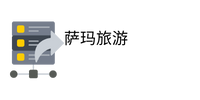The advantage of cross-channel hashtagging lies mainly in the fact that you can convey what you want to say about a certain theme. What you want to achieve is that your campaign or brand is found and recognized. Ideally, there is a correlation between what customers, fans and followers see on Facebook, Twitter, Instagram, Pinterest, Google+ and perhaps offline and in television campaigns.
Measuring = knowing
Of course, cross-channel hashtagging sounds great . But how do you measure how often your hashtag is mentioned across the morocco phone number list different channels? Can we say anything about the reach we have achieved with the use of hashtags? Which hashtags should you avoid using in the future and which ones should you definitely use?
In addition to measuring overall buzz with monitoring tools such as Coosto or Engagor , there is software that specifically measures the effect and reach of hashtags. One of those tools is TagDef . With TagDef you can track popular hashtags. Handy if you want to sail along with trending topics. In addition, you discover what related hashtags are, when the hashtag was first introduced and what the meaning is. This can be useful in the case of #yolo, for example. It is also fun to discover that Oreo (those delicious marketing list chocolate cookies) ties in with You Only Live Once, by giving #yolo the meaning You Obviously Love Oreos .
Another tool that specifically focuses
A on hashtags is Hashtags.org . It’s actually the ‘Most Engaging Days/Times’ section of Social Bakers, but specifically which tools do you use and why? for hashtags. For example, we see that the use of #Yolo is most efficient at the end of the afternoon, between 15:00 and 17:00. Note that this is a 1% sample result: for more extensive statistics you will need to upgrade the tool. In addition, it is an international tool, so it is not only focused on the Netherlands.
